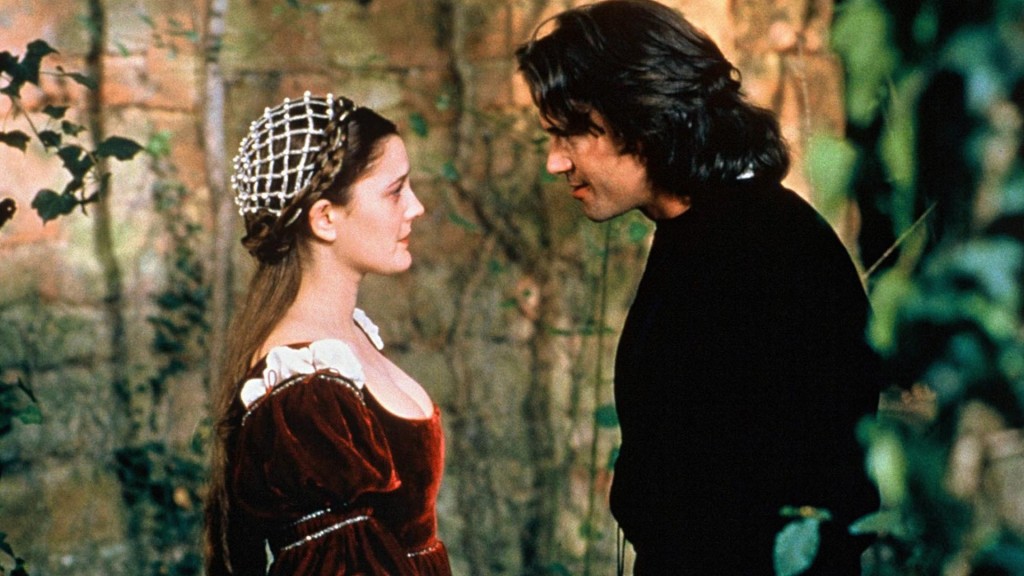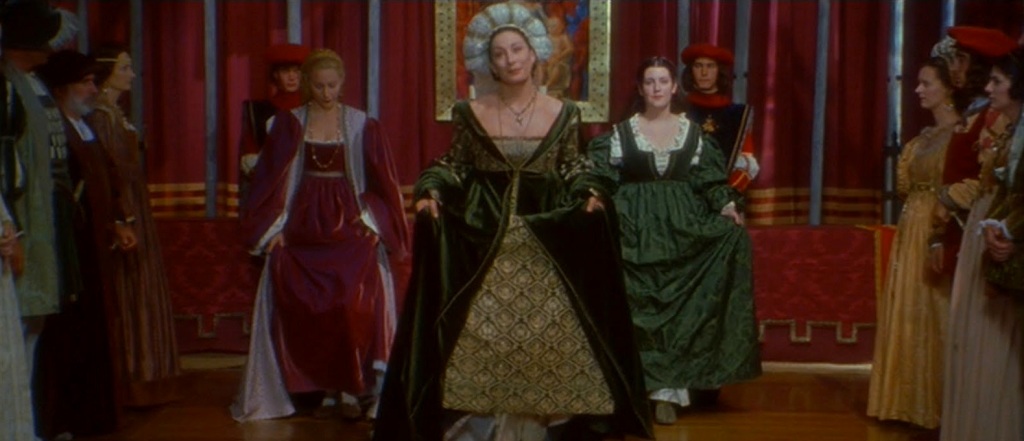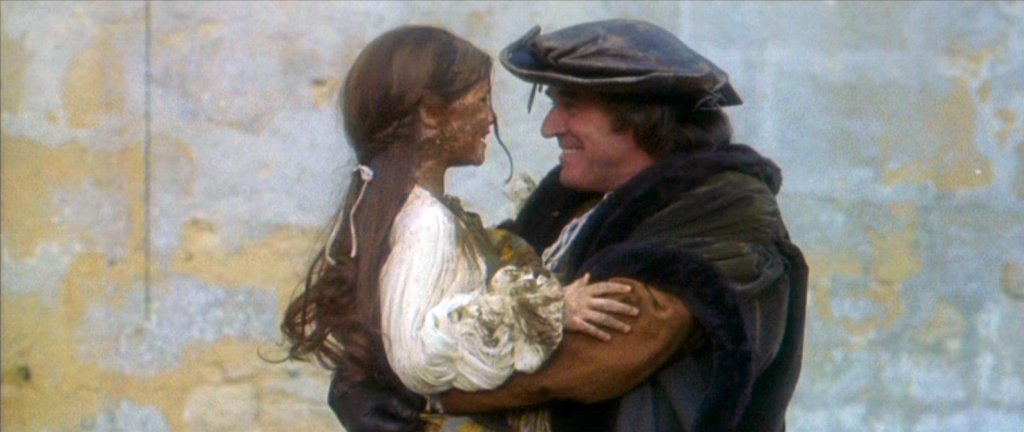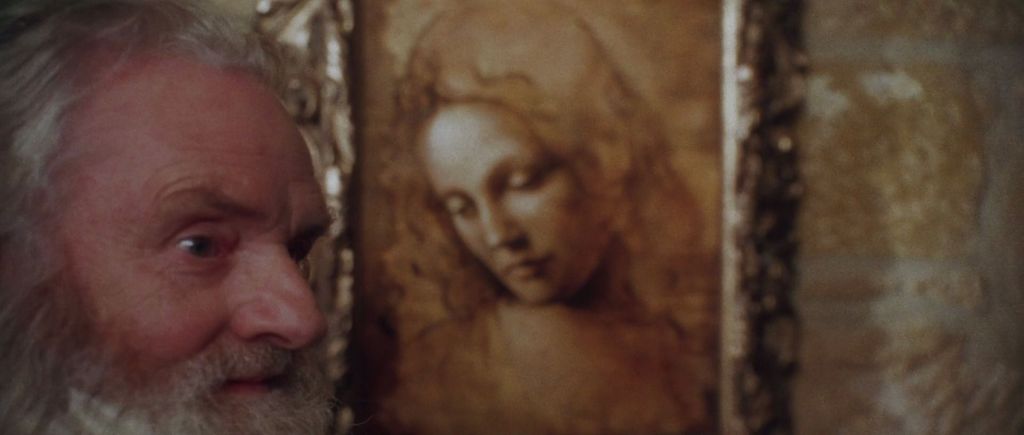Fairy tales have been adapted to cinema for many decades. The most obvious is Walt Disney’s ground-breaking 1937 animated film Snow White and the Seven Dwarfs but as a genre they have been inspiring films since movies were in black and white and silent. Across the world, the fairy tale adaptation has seen a variety of live-action and animated takes including Jean Cocteau’s iconic Le Belle et la Bête (1946), Jacques Demy’s Donkey Skin (1970), Yim Pil-sung’s Hansel and Gretel (2007) and even recent American efforts including Snow White and the Huntsman and Mirror Mirror (both 2012).
Even when not based directly on a pre-existing 18th or 19th century children’s story, the fairy tale iconography and aesthetic has been copied and remixed by Hollywood for a host of popular pictures – often adapted from similar ‘remixed’ novels: Neil Jordan’s The Company of Wolves (1984), Jim Henson’s Labyrinth (1986), and Matthew Vaughn’s Stardust (2007) all draw extensively from the rich catalogue of tropes, themes and images from the Brothers Grimm, Charles Perrault and other classic authors.
With so many films produced it is often difficult for a new production to find a take on the material – particularly on one of the more well-worn stories – that actually brings a fresh angle and an engaging new creative direction. In 1998 director Andy Tennant and producer/star Drew Barrymore achieved that task with aplomb when they made Ever After, a more historically grounded but emotionally enchanted adaptation of Perrault’s Cinderella.
Drew Barrymore was 23 years old when she made Ever After. The film was her debut as a producer, having established Flower Films with friend Nancy Juvonen in order to take better control of her career. At that point she had been performing on screen for 22 of her 23 years, beginning with a television commercial before vaulting to the big screen as a child actor in Altered States (1980), E.T. the Extra-Terrestrial (1982), and Firestarter (1984). She subsequently became a near-poster child for the ‘crash and burn’ Hollywood child star: addicted to alcohol by 11 years old, to cocaine by 13, and admitted to rehab at just 14 years of age.
In the early 1990s Barrymore made a return to the screen with a Lolita-esque sexualised image via such films as Poison Ivy (1992), Doppelganger (1993), and Bad Girls (1994). During the same period she made headlines posing nude for Playboy and Interview magazines, and flashing talk show host David Letterman live on air. By 1995 her career and image had settled down somewhat, with noted appearances in Boys on the Side and Batman Forever, and a high-profile cameo in Wes Craven’s 1996 slasher movie Scream.
1998 marked Barrymore at likely her most popular ever, thanks to two roles: romantic lead Julia in The Wedding Singer, and Danielle in Ever After. ‘I was trying to reinvent myself,’ Barrymore explained in 2016, ‘and come out of a tumultuous period.’[i]
‘And then I came across this story that said, “The Grimm brothers had it all wrong, that Cinderella rescued herself.” And I thought, “Rescue yourself? That’s who I want to be, that’s who I need to be in this life.”’[ii]
Ever After is a fascinating film. On the one hand it is easily to look at it as another saccharine romance for an intended audience of teens and tweens, packed with twee dialogue and a wild disregard for history – and if you choose to look at it that way, you will absolutely find the ammunition to make your case.
On the other hand, there’s a more interesting side to Ever After. This is the side that reworks a centuries-old folk story to give its protagonist an unprecedented level of agency and smarts. It is the side that pulls out the wish-fulfilment fantasy elements from the tale and replaces them with real-world Renaissance equivalents. One can quibble over the historical accuracy – the history-based jokes don’t line up with history, the “Mona Lisa” is presented on a canvas instead of wood, and the real Prince Henry married Catherine de Medici – but at the same time this is a fluffy romance that presents Leonard da Vinci as a fairy godmother. Sometimes it is okay to throw accuracy to one side and simply have fun with the story.
Sadly the general critical disregard with which Ever After was met – the entertainment press was not hostile, just not particularly interested – combined with a predictable lack of film historians’ interest in women-dominated film – this features a female producer/star, a female screenwriter and, of course, a predominantly female audience – means that there is not an awful lot written about how Ever After was made. There is a press kit here, a short magazine interview there, but ultimately not an awful lot to go on. It’s a genuine shame. This film deserves a lot more attention and respect than its first 20 years have attained.
The film’s original screenplay was written by Susannah Grant (Thelma and Louise) based on a brief to write a new Cinderella with a Merchant-Ivory feeling to it. Ismael Merchant and James Ivory were a producer-director team who established a particularly upmarket and prestigious tone to their historical dramas, particularly during the 1980s and early 1990s with a string of acclaimed films including A Room with a View (1985), Howard’s End (1992) and The Remains of the Day (1993).
Grant claimed that she ‘didn’t see the point of doing a Cinderella story with the same old themes, without saying something a little different with it. I didn’t want to deconstruct the story; I wanted to reconstruct it. I took out magic and used Leonardo da Vinci as a symbol of imagining the impossible, or of seeing the possible in whatever other people think of as impossible.’[iii]
It was this screenplay that attracted Drew Barrymore’s attention. ‘This is a different Cinderella,’ she explained at the time. ‘I wouldn’t have wanted to play a woman who waits to be rescued. This is not only a woman who doesn’t wait to be rescued; she rescues others. She’s smart and well-read and ahead of her time; she’s incredibly strong. That’s what’s so appealing about her.’[iv]
Barrymore’s Flower Films signed with 20th Century Fox to produce the film, and soon found a director in the shape of Andy Tennant.
The Chicago-born Tennant initially trained as an actor and dancer. He appeared in the latter capacity in Grease (1978), before performing several modestly-sized roles in 1941 (1979), Midnight Madness (1980), and Grease 2 (1982). Dissatisfied with performing, Tennant switched to directing. His directorial debut was the made-for-television film Moving Target (1988). In 1993 he directed the TV film The Amy Fisher Story, a sensationalised account of the real-life Fisher who gained notoriety for a teenage affair and subsequent attempted murder. That film starred Drew Barrymore – then right in the middle of her “Lolita period”.
Between The Amy Fisher Story and Ever After Tennant directed two other films. It Takes Two (1995) starred Kirstie Alley, Steve Guttenberg and child stars Mary-Kate and Ashley Olsen. Fools Rush In (1997) starred Matthew Perry and Salma Hayek. Both films, while poorly received, were commercially successful. They were both romantic comedies, showcasing Tennant’s abilities to make a popular love affair work on screen. ‘I wanted to tell a very different version of Cinderella,’ said Tennant, ‘because I have two daughters. I didn’t want them growing up believing you have to marry a rich guy with a big house in order to live happily ever after.’[v]
Tennant and Barrymore suggested additional screenplay elements, including the introduction of a gypsy camp and developing an even more pro-active and physical protagonist. Tennant undertook a final rewrite of the script with his writing partner Rick Parks before the commencement of shooting.
With Drew Barrymore playing the bold and defiant ‘Cinderella’ character Danielle de Barbarac, the next priority was to cast her wicked stepmother: Baroness Rodmilla de Ghent. It was Tennant who struck upon the idea of approaching Angelica Huston, not in the least because of her and Barrymore’s shared heritage of Hollywood. Both women came from well-known film industry families. In 1941 Huston’s father John Huston had even directed Barrymore’s great uncle Lionel in The Maltese Falcon. ‘I got so into the idea of Huston and Barrymore working together,’ remarked Drew Barrymore, ‘our ancestors looking down on us. I was like, “Let’s go!”’[vi]
To Tennant and Barrymore’s delight, Angelica Huston signed on to play the role of the scheming Rodmilla de Ghent. ‘It’s nice to be wanted,’ said Huston. ‘It’s good to be doing this kind of movie at a time when there are so many films being made about tough, evil subjects. Being involved with something sweet and tender was a delight.’[vii]
Ever After begins with Jacob and Wilhelm Grimm arriving at the palace of a Grande Dame, having been invited to discuss their version of the “Cinderella” folk tale. They are surprised when she has a glass slipper brought into the room, and claims it belonged to a real woman named Danielle de Barbarac.
The Grande Dame was played by noted French actress Jeanne Moreau. A leading figure of the French new wave and avant-garde cinema, Moreau makes an immediate and distinguished impression. It is odd to see her in the film – odd that she was asked, and odd that she accepted – but it immediately signals that Ever After is not a run-of-the-mill studio picture aiming for a teenage audience. What thirteen-year-old in 1998, after all, would be remotely familiar with who Moreau is and the sort of career she had?
Jacob and Wilhelm Grimm were played by Andy Henderson and Joerg Stadler respectively. Their presence is perhaps a little on the nose, but it does achieve a key function: informing the audience from the outset that they are not about to see a typical Cinderella story. Indeed, the film’s marketing and publicity included a similarly aimed subtitle that the film itself did not: Ever After: A Cinderella Story. Not simply Cinderalla, but a version of it.
From here the film jumps back to 16th-century France. The bulk of Ever After was shot on location. The Château de Hautefort, a medieval fort that was extensively redeveloped in the 17th century, stood in for Prince Henry’s castle. Most of the other scenes were shot locally in the Dordogne.
Wealthy widower Auguste de Barbarac returns home to his estate with a new wife, the cold and aristocratic Baroness Rodmilla de Ghent, as well as her two daughters Marguerite and Jacqueline. He introduces them to his own daughter, the precocious eight-year-old Danielle. As a gift he gives Danielle a copy of Thomas More’s book Utopia, agreeing to read it with her when he returns from travelling in two weeks. On his ride out of the estate, however, Auguste suffers a fatal heart attack. Danielle is left with a stepmother she barely knows and two unfamiliar sisters.
Auguste de Barbarac was played by Dutch actor Jeroen Crabbé. After beginning his career in the Netherlands, he shifted to the USA. There he appeared in supporting roles in a number of films including Jumping Jack Flash (1986), The Living Daylights (1989), The Prince of Tides (1991), and The Fugitive (1993).
By the time Danielle is eighteen – and now played by Drew Barrymore – the estate has fallen on hard times and lies in increasing disrepair. Danielle lives her life as one of Rodmilla’s servants. Jacqueline is a spoilt favourite, for whom Rodmilla schemes to have paired with Prince Henry, while Marguerite is constantly mocked over her weight.
The teenage Marguerite was played by Melanie Lynskey. Four years earlier Lynskey had made her first film performance opposite Kate Winslet in Peter Jackson’s acclaimed drama Heavenly Creatures. While Winslet had subsequently progressed to a successful film career, Lynskey had been discouraged from acting any further. After one year in university, she took matters into her own hands, moved to Los Angeles, and started auditioning. Ever After was her first new role. In an interview, Lynskey recalled: ‘I was like, “Fuck it, I’m going to do it the way I want to do it. All I have is that I’m myself and I’m not like anyone else.” Everything changed when my attitude changed.’[viii] Lynskey has continued to act ever since, including supporting role in the popular TV comedy Two and a Half Men.
Megan Dodds played the older Jacqueline, describing working with Barrymore as ‘like being on one big holiday’[ix]. The film was Dodds’ first major performance, but she later established a strong UK-based career in the theatre where she played Ophelia in a Young Vic Theatre production of Hamlet as well as star in My Name is Rachel Corrie at the Royal Court Theatre – for which she won the London Theatregoer’s Choice Award for Best Actress.
While collecting fruit on the estate’s fringe, Danielle stumbles upon a man stealing a horse. Knocking him off it with a well-aimed apple to the head, she rushes to apprehend him – only to discover he is Prince Henry of France, on the run from an arranged marriage with the Spanish Princess Gabriella.
Let us face facts: Prince Charming is rarely more than a fairy tale cypher. In Ever After, Susannah Grant creates a character that, while sometimes charming, can also be smug, petulant, noble, courageous, kind, and cruel. He brings to mind Prince Charming in Stephen Sondheim and James Lapine’s musical Into the Woods, when he admits ‘I was born to be charming, not sincere’. This prince is one step further: he has emotional facets, and actual character development. He begins the film superficially charismatic but selfish, and ends it a wiser and kinder man. The changes in his behaviour come from Danielle too, giving her greater agency and he a pleasing level of depth.
Both Jude Law and Jonny Lee Miller were approached to play Prince Henry, but both declined. The role was ultimately won by Scottish actor Dougray Scott.
Prince Henry throws a handful of coins to Danielle to guarantee her silence; Danielle uses it to try buying back a servant sold to the Americas by Rodmilla. While undertaking that task, and disguised in one of her mother’s dresses, Danielle meets the Prince again. He, clearly smitten, asks her for her name: she gives it as Nicole de Lancret. It is her mother’s name: in a moment of panic Danielle takes on a false identity as one of the aristocracy.
So the main story commences: Danielle engages in a cat-and-mouse romance with Prince Henry, while an unsuspecting Rodmilla schemes to have the Prince romance Jacqueline. It is a well-crafted storyline that balances multiple characters, and expresses them with humour and enormous charm.
By extending the amount of time Danielle and Henry spend together, the film successfully makes their growing relationship feel a little more realistic and grounded than traditional tellings of Cinderella. In the folkloric version Cinderella meets the nameless prince during his royal ball and runs away at midnight. In Ever After Danielle flees from Henry on four separate occasions, instilling him with her own sense of social justice along the way. He expresses disinterest in the affairs of peasants; she schools him on compassion along the way. He shows a strong distaste for the Romany community (described rather poorly as ‘gypsies’) that camp in the forest; a humorous encounter with them leads him to actively embrace them as friends.
The film is also colour-coded, dressing each key character in a primary hue throughout the film. Rodmilla wears black, Marguerite wears orange, and Jacqueline blues and greens. Danielle wears mostly blue, and it is not a coincidence that Rodmilla personally notes during the film that the Prince likes that colour in particular.
As in the original fairy tale, Danielle’s romance with her Prince is aided by a fairy godmother. A godfather in this case, since the aid comes in the form of the iconic Renaissance artist Leonardo da Vinci. This self-proclaimed ‘bastard son of a peasant’ provides Ever After with one of its most imaginative and clever innovations. It further grounds the story in a somewhat realistic setting, and – played by English actor Patrick Godfrey (A Room with a View, The Remains of the Day) – provides the film with what is arguably its most enjoyable character outside of Danielle herself. Danielle may be delightful to watch, but Leonardo gets all of the best lines.
At the end of the film’s second act, Danielle attends the royal ball at which Prince Henry is obliged to name the woman he has chosen to marry. Upon her arrival, however, Rodmilla unmasks her before she can explain her deception. Henry rudely rejects her, and Danielle flees back to her country home.
A scene was shot immediately prior to the ball to demonstrate Leonardo making Danielle costume wings and applying elaborate make-up to her face. The scene was ultimately excised from the theatrical edit of the film. It was a cut that worked: Danielle’s outfit creates a much larger impact without the viewer having seen it assembled.
Costume designer Jane Law was originally hired onto Ever After to produce dresses for Anjelica Huston to wear as Rodmilla, however after delivering the costumes on location in France she was asked to remain behind to meet with Drew Barrymore. ‘She had already had the “special” dress made for her,’ explains Law. ‘Drew was very sweet about it but she just felt that it wasn’t special enough. It wasn’t wasted, she wears it elsewhere in the film. It was an unexpected and delicious project. There were a few unallocated bits and pieces in the wardrobe department which we showed to Drew and I came home with them with permission to buy more. I arrived back in France, in the evening, a week later with the finished dress.’[x]
The next day Rodmilla sells Danielle to the grotesque aristocrat Pierre le Pieu, earning herself a healthy profit while ridding herself of a thorny obstruction. By the time Henry learns of the sale and rides to the rescue, Danielle has already emancipated herself from Pierre’s clutches at knifepoint. She has become the princess that Barrymore so desperately wanted to play: the woman who rescued herself.
Pierre le Pieu was played by noted cult performer and writer Richard O’Brien, best known for creating the stage musical The Rocky Horror Show. He also originated the role of Riff Raff in that production – a role he repeated in Jim Sharman’s feature film adaptation. He had also appeared extensively on science fiction and fantasy film and television, including Robin of Sherwood, The Crystal Maze, Dark City, and The Wolves of Willoughby Chase.
The remainder of the film is effectively house-keeping. Rodmilla and Jacqueline receive their come-uppance, with Marguerite effectively switching sides to help Henry discover what had happened to Danielle. The film has its happy-ever-after conclusion, framed by a final scene of Jeanne Moreau’s Grande Dame. While more realistic in setting and character, Ever After refuses to deny its audience a fairy tale ending. For once, however, the ending feels properly earned.
Ever After had originally been conceived as a relatively minor film on 20th Century Fox’s release schedule, however studio executives grew so charmed by the project that the scheduled it for a lucrative late Summer release. The film’s promotional trailers actively targeted a teenage audience by using contemporary music (Loreena McKennitt’s “The Mummer’s Dance” and Robert Miles’ “Fable”, specifically) in lieu of George Fenton’s orchestral score.
The film was one of three new releases in American cinemas on the weekend of 31 July 1998. It finished the weekend in fifth place, failing to compete with the Samuel L. Jackson thriller The Negotiator or Disney remake The Parent Trap – not to mention holdover Saving Private Ryan, which held the number #1 position for its second week of release. In its second week, however, it grossed almost as much as in its first (US$13m vs US$15m) and only slipped to sixth place. It ultimately lasted eight weeks in the USA top ten. Along with international revenue, Ever After grossed a global theatrical sum of US$98 million dollars; well beyond its production budget of US$26 million.
Of course the film discovered a far more profitable long-term future on home video and television. More than 20 years later Ever After is a beloved family-oriented romance with a large and ever-growing fan base. In the genre of fairy tale adaptations it remains one of the absolute best: heartfelt, contemporary, impeccably performed, and charmingly sincere.
[i] Alyssa Bailey, “Drew Barrymore: I need to be the person to rescue myself in life”, Elle, 23 April 2016.
[ii] Alyssa Bailey, “Drew Barrymore: I need to be the person to rescue myself in life”, Elle, 23 April 2016.
[iii] Michael Sragow, “Oh, Susannah!”, Salon, 14 April 2000.
[iv] Bernard Weinraub, “At the movies; a woman robs the cradle”, New York Times, 7 August 1998.
[v] Quoted in Ever After production notes, 20th Century Fox, 1998.
[vi] Hilary De Vries, “Drew Barrymore’s fractured fairy tale”, Los Angeles Times, 19 July 1998.
[vii] Quoted in Ever After production notes, 20th Century Fox, 1998.
[viii] Maris James, “The playlist profile: Melanie Lynskey talks Hollywood, “Hello I Must Be Going”, “Heavenly Creatures”, and more”, Indie Wire, 4 September 2012.
[ix] Ruki Sayid, “Interview: Megan Dodds – the day I kissed Madonna”, reprinted at The Free Library, 2003.
[x] Quoted in Ever After: A Costume Study Site (http://www.everaftercostumes.com/breathe.shtml).















Leave a comment